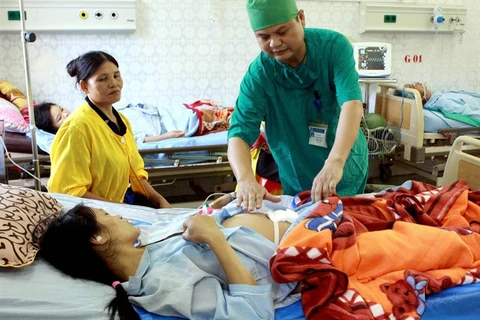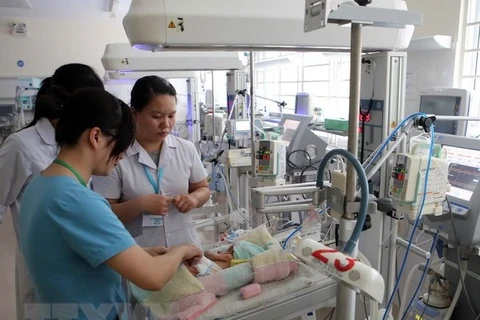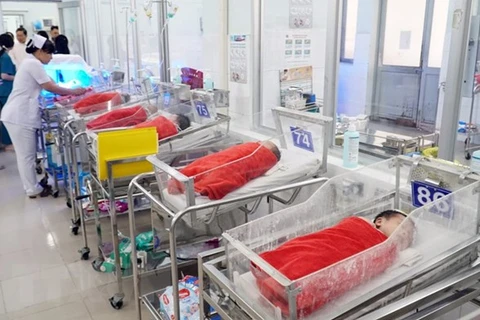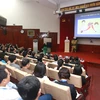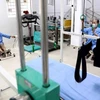HCM City (VNS/VNA) - Pre-term births are the leading cause of global under-5 child mortality, as well as short- and long-term morbidities such as sepsis, retinopathy of prematurity, and neurodevelopment impairment, Dr Jane Hirst of Oxford University said at a conference held recently in Ho Chi Minh City.
Hirst and her colleagues, including doctors at Tu Du Hospital in HCM City, carried out a study on pre-term births from October 2016 to October 2018 to update biomarkers for premature births.
Prematurity is an important cause of morbidity and mortality in Vietnam, Hirst said at the 19th Vietnam-France-Asia-Pacific Conference on Obstetrics and Gynecology.
“Prevention is a priority, but predicting which women will deliver pre-term remains challenging,” she added.
An effective biomarker would focus ante-natal care on those at greatest risk of pre-term birth and facilitate development of novel interventions, Hirst said.
However, pre-term birth is a highly heterogeneous syndrome characterised by multiple phenotypes and associated risk factors.
Classification schemes based simply on gestational age at birth ignore this clinical complexity, which may explain why finding effective prevention strategies has been so difficult, according to Hirst.
Gerard H. A. Visser of the University Medical Centre in the Netherlands said that identification of women with a short cervical length at around 20 weeks of gestation and treatment of these women with either progesterone or pessary may reduce premature births and improve prenatal outcomes.
“Overall, this may lead to a reduction of 80 percent of pre-term deliveries,” Visser said.
“It might be wise to study first your population characteristics; the incidences of a short cervix, which is the most appropriate cut-off level for high or low risk regarding pre-term birth; and how many women need to be screened to prevent one pre-term birth. These studies will help determine the need for implementation of cervical length screening programme,” he said.
Dr Ha Manh Tuan of HCM City University of Medicine and Pharmacy said the World Health Organisation reported 5 million pre-term births every year, of which 1.1 million babies die from pre-term birth complications.
However, 80 percent of pre-term babies survive with essential neonatal care, while 75 percent of death of pre-term births can be prevented, WHO said.
Dr Nguyen Van Cuong of Frieslandcampina Vietnam, whose Friso brand is one of the main sponsors for the conference, said that proper nutrition for premature babies would increase the rate of survival and quality of life.
“With proper nutrition, these babies’ growth will be the same as those from pre-term births,” Cuong said.
The two-day conference is an important annual medical forum receiving support as well as companionship of globally recognised experts, with more than 50 lectures presented by domestic and foreign professors, doctors, and experts from the International Federation of Gynecology and Obstetrics, Oxford University and Utrecht University of the Netherlands, among others.
It aims to improve reproductive healthcare quality through sessions on prevention of pre-eclampsia, gestational diabetes mellitus, prenatal diagnosis and management of morbidly adherent placenta, management of specific complications in monochorionic twin pregnancies, gynecologic oncology in pregnancy, progress in prenatal care, and assisted reproductive technology.
The forum followed Tu Du Hospital’s mission of exchanging techniques with local healthcare facilities.-VNS/VNA
VNA

